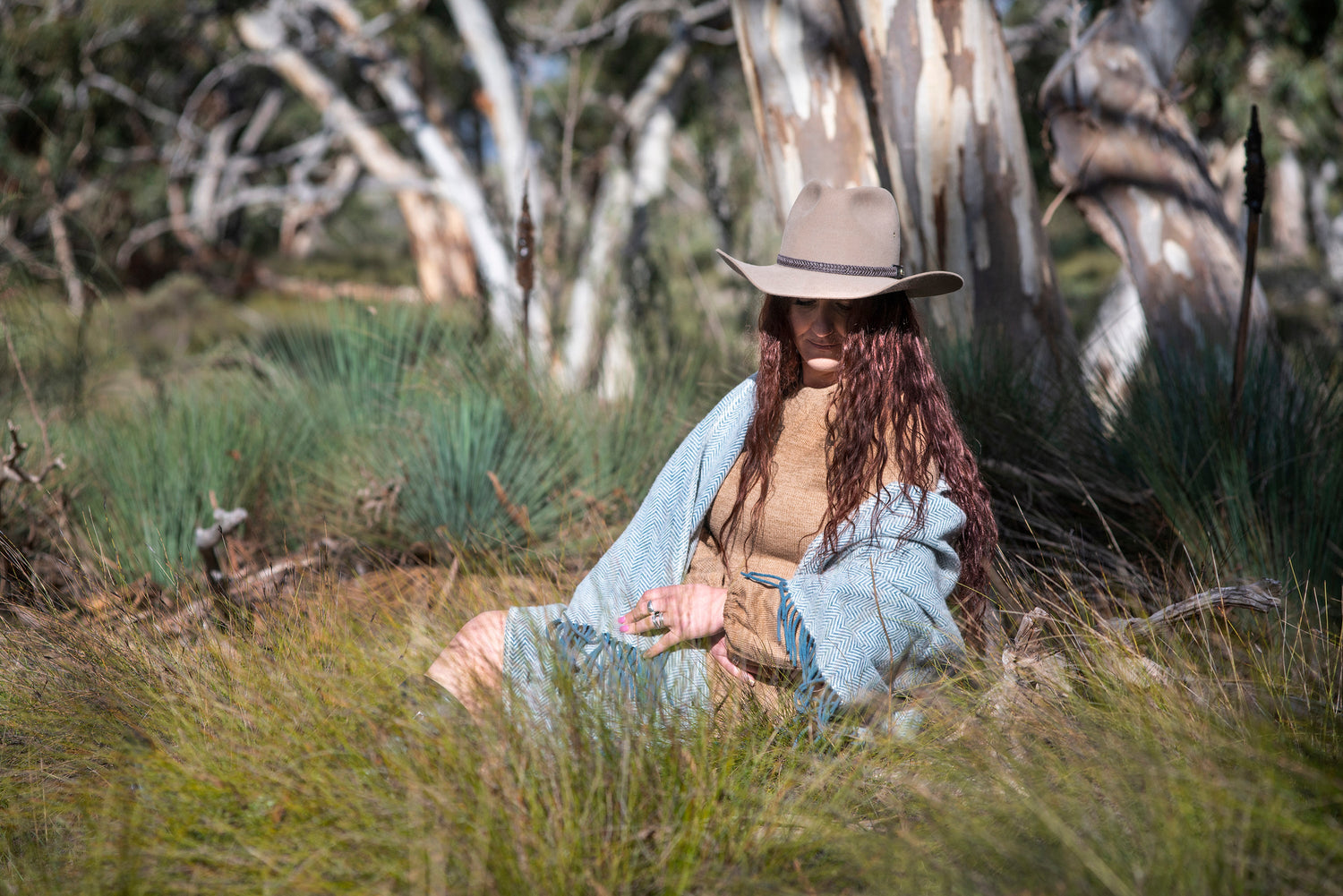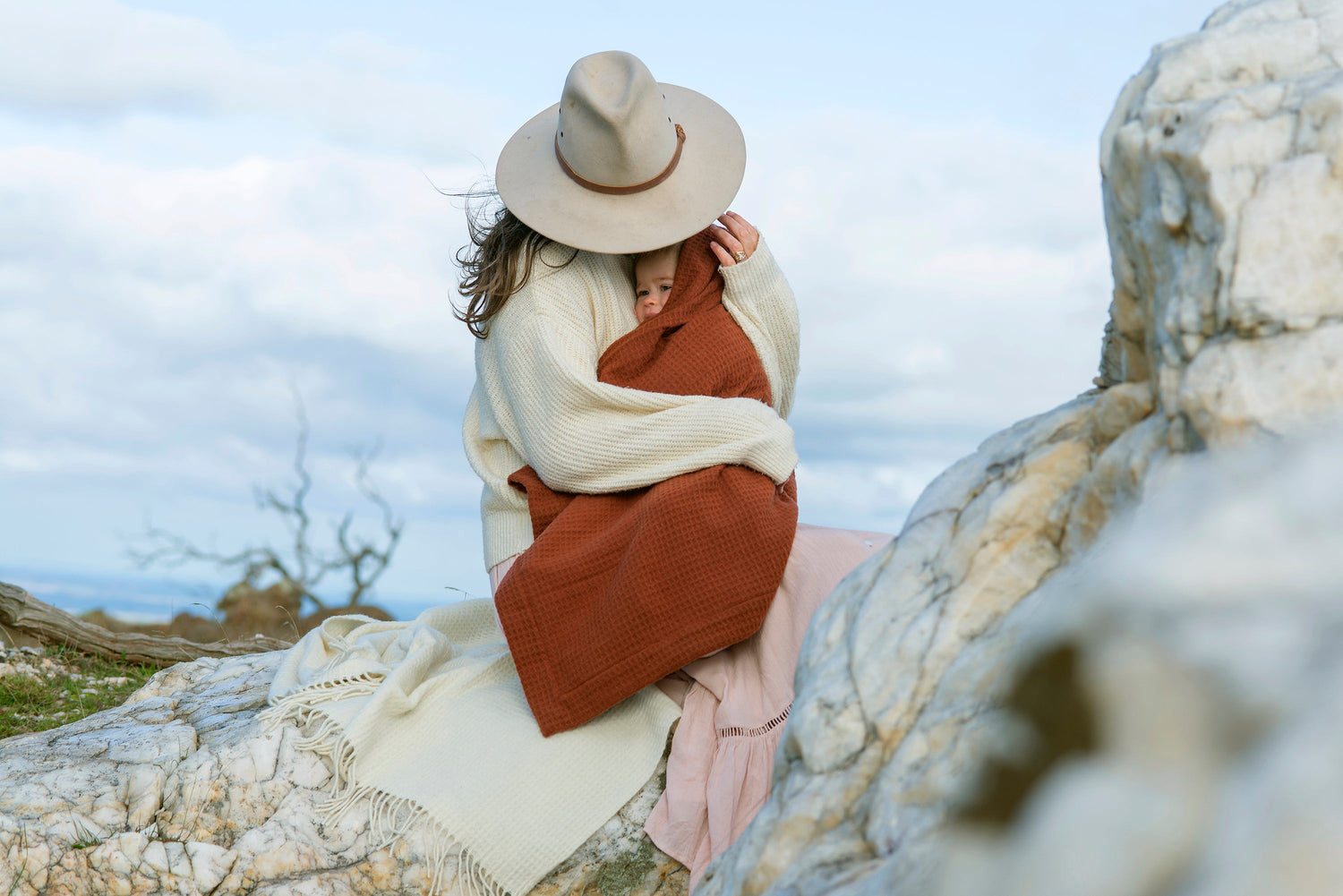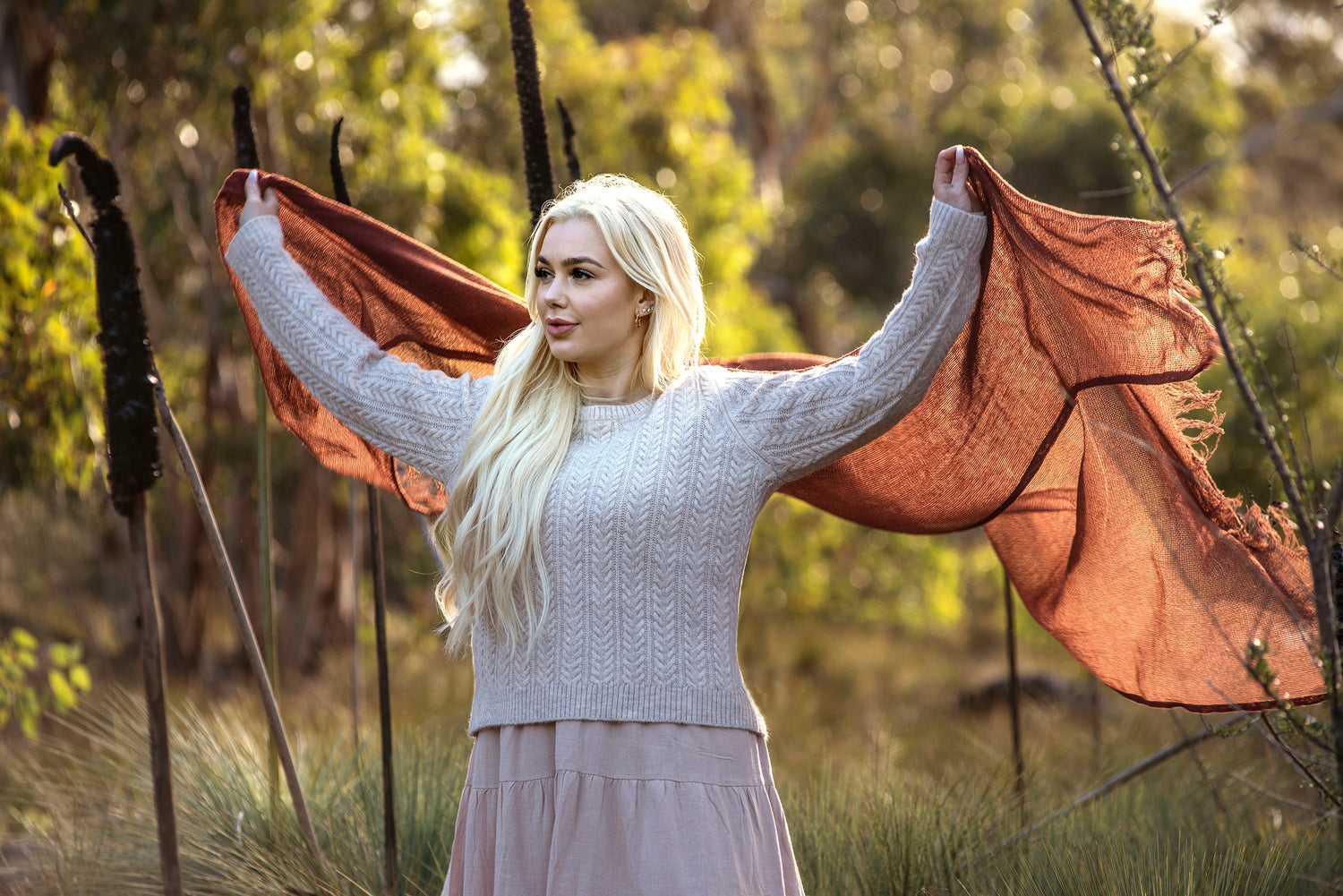
With our next load of wool on it's way to get washed as we speak, I thought I'd talk a bit about the process involved in making our Merino Throws. This is the same process we use to make our Merino Scarf, Wool Wrap and Merino Baby Blanket.
Where do we start?
A Merino Throw starts it's life off as soil and air! How amazing is that? Grass grows from the soil, our sheep eat the grass and turn it into the amazing fibre we call wool. Once they have grown enough of it, we shear the sheep (carefully and respectfully) and the wool is sorted and pressed into wool bales like the image above.
Washing
Now it's time for the "greasy" wool to be washed.
The first process is called "scouring" which involves the wool passing through a number of bowls, normally up to 8. The first 3 bowls contain washing detergent and the remainder of the bowls have fresh water to thoroughly rinse the wool. Once it has been washed it gets transported by air power to a room known as a "bin" where it's allowed to sit until it's moisture content is back to normal (until it's dry).
If the greasy wool had a high amount of vegetable matter (seeds, burs, grass) or if the following processes require absolutely zero vegetable matter, it goes through a process of "carbonising". This involves immersing the wool in a solution of acid to break down the "VM" and then baking it in a dryer set at 95C to 120C. After the VM has been broken down it goes through a number of heavy metal rollers which crush the carbonised burs into dust which is then shaken out by a machine. The acid in the wool is then neutralised by passing in through an alkaline solution.
Carding and Spinning
So we have our nice clean loose wool, but the problem is it's now all tangled up so it needs to go through a carding machine that aligns all of the fibres. The carding machine has a number of rolling cylinders covered in pins that act like a hairbrush untangling and aligning all of the fibres into "rovings" (long thin strands of the aligned fibres), ready for spinning.
We are currently talking about the "woolen" process which involves shorter fibres. This process makes the yarn suitable for weaving. All of Modern Merino's Merino Throws, Merino Scarves, Wool Wraps and Merino Baby Blankets are made using this method.
Next is spinning the fibres into yarn. There are a couple of types of spinning, but they all comprise of spinning the "rovings" very tightly to create a strong single strand to meet a certain specification. This is the yarn.
The final stages
Once we have the yarn, the fun part begins. This is where we can start creating the final product. First, it is dyed, we get the yarn itself dyed into different colours instead of dying the final product. This allows us to swap and change different "weft" and "warp" colour combinations. The warp is a continuous yarn that goes the length of the garment and the weft yarn weaves back and forth in between the warp yarns. About 30kg of yarn is loaded into a "loom". The loom weaves a long continuous roll of fabric until it runs out of yarn.
After weaving, the fabric goes through a number of different processes including cutting the long roll into individual products, milling to fluff up the fabric, and stitching any edging and care labels.





